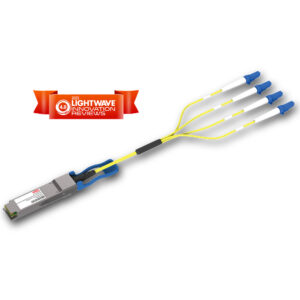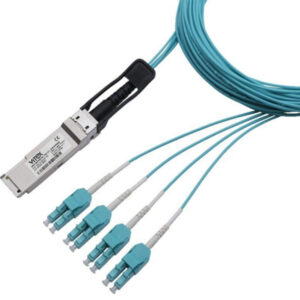Why Do you Need a Fiber Breakout Cable?
Interview with Craig Polk
As data centers increasingly upgrade to higher speeds, they need greater flexibility to allow for incremental network upgrades as well as strategies to avoid system failures.
A fiber breakout cable is one engineering option that mitigates risk, lowers operating costs, provides greater flexibility to upgrade and increases data center efficiency. In this Q & A, Craig Polk, Product Manager at Vitex and engineer, explains why and when this might be the best solution for your needs.
What is a fiber breakout cable?
To answer that question, you have to understand what fiber breakout is. It is what the term implies. You are taking one connection and splitting it into multiple connections: breaking it out into multiple pathways or ports.
What are its advantages?
- Fiber breakout cable facilitates:
- connection from higher-speed to lower-speed in a more efficient way.
- redundancy or back-up. You’re able to connect to other equipment so that if a port, path or switch goes down, your entire system doesn’t go down with it.
For example, when you breakout a 400G to a 100G using a DAC, an AOC, or fiber cable, if you tried to connect without a fiber breakout cable, after hooking up your 100Gs to a 400G component, your 400G will only run on 100G and won’t be operating at its full capability. Using a fiber breakout cable, you can run it four times faster. You’re using the full capability of that switch. For more information on breaking out 400G to 4x100G, see this article.

- It’s suitable for disaster recovery. If your network was designed with redundancy or back-up, it’s probably because you’re concerned about failures. As a safeguard, you’d build in redundancy paths for parts of the system so that if something goes down on the network, you’re able to use those paths and still have some connectivity. Or when some part of the system goes down, you could have them rerouted by your software. Overall, the system might have less throughput but more uptime. Uptime is important to many users.
- Fiber breakout also uses ports with greater efficiency. You can decide how to run your data, across what channels, so you’re using your ports with the most efficiency.
- Fiber breakout cable is extremely strong and rugged.
What are the disadvantages?
One disadvantage is that if your communication or data is not going through and the breakout is your failure point, you’ll have communication failures in all four channels, so you have to replace your entire breakout. That’s a worst-case scenario. But even if only one path is the problem and the others are working properly, you can’t change just one. You’d have to schedule a time to do maintenance and you might end up having to replace the entire breakout cable. If not, you’d have downtime on your cables 1 through 3.
What’s an alternative to fiber breakout?
Panel distribution. Instead of fiber breakout, you’d be using straight-through cable of one type on one side. All the connections, and all the breakouts, would be at the panel. It’s easier to manage a panel distribution. If you have a failure in between connections, you only have to replace the part or cable that failed, not the entire breakout.
What are the considerations in determining your best solution?
You need to consider your physical architecture. If you have multiple breakouts you want to directly manage, it might make more sense to use panel distribution. Then you won’t have to worry about having a lot of breakout cables you have to manage.
For short distances, using fiber breakout cable is a better choice. You won’t need to set up an entire infrastructure as you would for panel distribution. Setting up a panel distribution is very involved and is only needed for a larger distribution, for linking multiple connection points at greater distances.
Can you recap why and when you need a fiber breakout cable?
Redundancy and to best utilize your current hardware. It’s also a great option if you’re planning to upgrade your architecture: you can best utilize your current hardware while you’re upgrading your hardware. If you have some older switches that only support slower data rates, you don’t have to upgrade everything all at once. For example, if you have 100G components and you’re just starting to use 400G, you can extend the life of the 100G and upgrade in increments.
In short, using a fiber breakout cable saves you money and operating costs.
With almost two decades of fiber optics experience the Vitex team includes specialized fiber optics-trained engineers who are there to provide immediate, robust technical support. Talk to a Vitex product expert to find the right connectivity product.
Related Products



